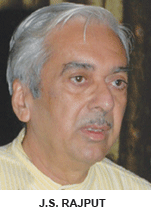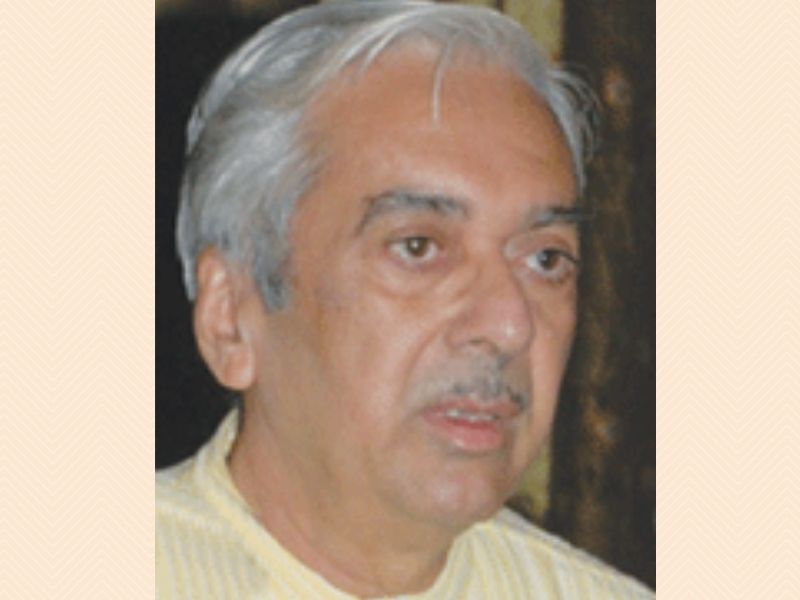Political will missing link
 Despite universal awareness that education — especially quality primary-secondary education — is the foundation block of national development, the tragedy of post-independence India’s national development effort is that in the actual allocation of resources, education never got the priority it deserves. The official mantra has always been that more pressing problems — widespread hunger, poverty alleviation, national security among other issues — needed to be given higher priority.
Despite universal awareness that education — especially quality primary-secondary education — is the foundation block of national development, the tragedy of post-independence India’s national development effort is that in the actual allocation of resources, education never got the priority it deserves. The official mantra has always been that more pressing problems — widespread hunger, poverty alleviation, national security among other issues — needed to be given higher priority.
This situation has been exacerbated by squandering of the meagre resources available and Indian education has not remained untouched by this national malaise. Schemes such as Operation Blackboard launched in pursuance of the National Policy on Education, 1986, failed miserably because of inadequate utilisation of resources. Two decades later, this scenario is being re-enacted in implementation of the historic Right to Free and Compulsory Education (RTE) Act, 2009. Output is far below targeted levels, and grossly incommensurate with resource inputs.
The number of young persons below 25 years of age in India is estimated at a massive 560 million. Of them, 225 million are in the 10-19 age group, the most important years during which youth make critically important career and lifestyle decisions. Therefore they must be handled with utmost care and caution. Our education system is insufficiently aware of the importance of these years and 70 percent of children in this age group are recipients of poor quality education which provides no direction, values or life skills. They are uncertain, unsure and confused about the future.
This is not to say that no progress has been made in primary-secondary education. Capacity expansion has been achieved and the increase in primary enrolment ratio (98 percent) is impressive. Moreover from less than 20 percent, adult literacy has risen to around 75 percent despite a population increase of over three times — a noteworthy feat for a developing country. There are now around 700 universities and 35,000 colleges countrywide which though still inadequate, reflect considerable investment in higher education. However the greatest disappointment which outweighs all these positives is the continued downward slide of quality in all sectors of the education system.
Whatever the other expectations from education, empowering individuals to earn their livelihood through honest work should be the prime objective. Yet post-independence India has faltered badly in imparting vocational education which was forcefully recommended by the Kothari Commission (1966). Consequently the number of unemployed youth has been growing steadily, with even engineers and management graduates unable to take up assignments without additional training inputs. That skill development has not been made compulsory for all, is a major lacuna of Indian education that needs to be addressed with strong policy decisions.
A great seer and educator, Mahatma Gandhi understood this and said education should begin with “working with hands’’. The consequences of continuous neglect of VET (vocational education and training) are disastrous: only 2 percent of India’s youth in the age group 15-29 years have received vocational training in the country’s 8,800 Industrial Training Institutes (ITIs). Of the remainder, another 4.7 percent have received skills training under the informal hereditary system. Consequently the percentage of the population with vocational skills in the 15-59 age group aggregates a mere 6.7 percent.
During the past two decades, the flow of funds for education from the Centre to state governments has swelled considerably. But contrary to New Delhi’s expectation, it has resulted in increased dependence on the Centre with state governments half-hearted about contributing their share of resources. Foreign funding of elementary education has aggravated this situation. On the other hand, the influential middle class — including the intelligentsia — is unmindful of the problems of the majority of children in dysfunctional government schools as their wards are getting ‘good’ education in private schools. And the Central and state governments have shown little courage to effectively implement the common school system. Even the 25 percent quota provision for children from EWS (economically weaker section) households is being publicly challenged by private schools and there is little evidence it will be enforced sincerely as mandated by the RTE Act. True, the Central government has articulated a mission for each stage of education but it continues to operate with age-old bureaucratic practices. State governments also take these missions lightly and implement them negligently.
The Sarva Shiksha Abhiyan (primary education for all) programme has completed a decade but again, except for increased enrolment in primary education, the programme has little to show the nation by way of improvement in learner attainments or skills acquisition. Improvement of learning environments, mobilisation of resources by the State and society for education and, most important, support for teachers to raise their professional capabilities, are basic essentials that require strong political will. This is the missing link of Indian education.
(Prof. J.S. Rajput is a well-known educationist and former director of NCERT and NCTE)
Also Read: How Technology in School Education can Impact Millions of Indian Students

















Add comment